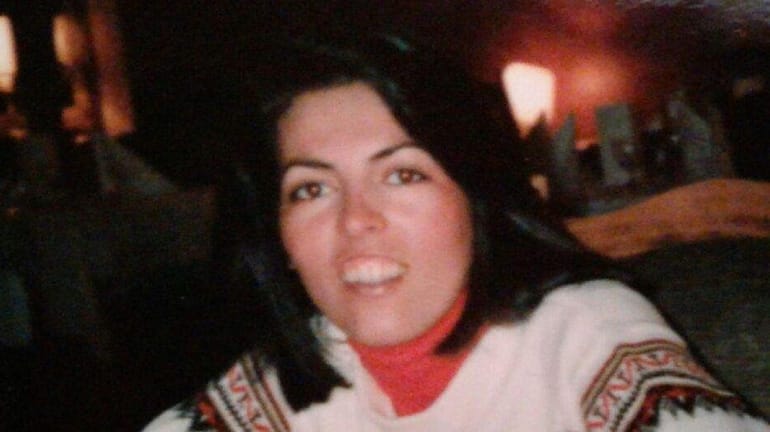
The Unsolved Disappearance of Norine Higuchi Brown
It was supposed to be a joyful time. Christmas lights twinkled throughout the neighborhood, holiday music played in stores, and families prepared for festive gatherings. But for one Long Island family, December 1990 marked the beginning of a heartbreaking mystery that remains unsolved over three decades later.
On the eve of her 32nd birthday, Norine Higuchi Brown told her husband she was making a quick trip to Pathmark to buy ingredients for Christmas cookies. She walked out of her New Hyde Park home around 11:00 PM on December 12, 1990.
She never returned home.
A Normal Day Turned Nightmare
The day had started like any other December day for the mother of two. Norine had spent the afternoon at the mall with her children and sister Susan, shopping for Christmas presents and visiting Santa Claus. After dropping her sister off in Franklin Square, Norine returned home with her kids.
By all accounts, it was an ordinary day filled with ordinary holiday preparations. There was nothing to suggest that within hours, Norine would vanish without a trace.
According to her husband John Brown, a local firefighter, the couple had a "minor argument" that evening. Despite this, Norine decided to make her late-night grocery run – something friends say wasn't unusual for her, as she preferred shopping when stores were less crowded.
The Discovery That Chilled Long Island
The following morning – December 13, Norine's birthday – John called her friend Elaine Comando around 8:00 AM asking if Norine had stayed at her house overnight following their disagreement. She hadn't.
Concerned, Elaine went to the Pathmark where Norine was supposed to have gone. What she found sent shivers down her spine: Norine's car was still there in the parking lot, locked, with wrapped Christmas presents inside. Her purse containing $45 was also in the vehicle. Strangely, her wallet and identification were not in the purse – they had been left at home.
It was as if Norine had simply vanished into the cold December night.
A Community Mobilizes
In the days following Norine's disappearance, fellow firefighters joined the search, combing the area around the Pathmark and beyond. Store employees were questioned, but no one recalled seeing Norine inside the supermarket that night, though one employee remembered noticing her car in the parking lot shortly after 11:00 PM.
The timing matched John's account of when she had left their home. But after that moment, Norine's movements remain a complete mystery.
Troubling Questions Emerge
As days turned to weeks and weeks to months, troubling questions began to surface. Elaine Comando later suggested that Norine and John had a complicated relationship. More pointedly, Norine's sister told News 12 in the early 1990s that the couple had a rocky marriage and she suspected John might be involved in her disappearance.
John Brown publicly stated his belief that Norine was murdered, mentioning a witness who reported seeing an argument in the Pathmark parking lot that night. However, police records show no official report of such an incident.
Perhaps most puzzling to Norine's family were reports that John Brown chose not to participate in search efforts for his missing wife. Instead, according to some sources, he focused on securing custody of his children and subsequently cut ties with Norine's family. Within a relatively short time, he had remarried.
Despite these suspicions, it's important to note that John Brown has never been officially named a suspect in the case, and no charges have ever been filed in connection with Norine's disappearance.
Who Was Norine?
Behind the headlines and mystery was a real woman with dreams, hopes, and a life story that deserves to be remembered. Born on December 13, 1958, Norine Higuchi grew up on Long Island and attended Uniondale High School. After graduation, she worked in an office setting before meeting John Brown, whom she later married.
Friends described Norine as a dedicated mother who adored her two children. She was organized and thoughtful – evidenced by her Christmas shopping being completed well before the holiday. The wrapped presents in her car suggest she was looking forward to celebrating with her family.
Those who knew her couldn't imagine Norine voluntarily abandoning her children or missing her birthday and Christmas. Everything about her disappearance seemed completely out of character for the woman they knew and loved.
Cold Case Warms Slightly
For years, Norine's case gathered dust, becoming one of Long Island's enduring mysteries. But in 2017, nearly three decades after her disappearance, Norine's friends, including Elaine Comando, reunited with a mission: to revive interest in her case.
Working with the Nassau Police Department, they sought to keep Norine's story in the public consciousness, hoping that someone might finally come forward with the crucial piece of information needed to solve the mystery.
Their efforts yielded a potentially significant development. In June 2019, reports emerged that Nassau's Homicide Squad was investigating a well in the backyard of the apartment building where Norine and John had lived. Investigators referred to the well as a "place of interest," though they stopped short of confirming whether any evidence relating to Norine had been discovered there.
The Psychological Impact of Ambiguous Loss
Cases like Norine's create what psychologists call "ambiguous loss" – a unique form of grief where there is no closure, no body to bury, no definitive knowledge of what happened. For families, this creates a particularly painful form of limbo.
Norine's children grew up without answers about their mother's fate. Her parents and siblings have lived decades wondering if today might be the day they finally learn what happened on that December night. Friends continue to carry the weight of her memory and the responsibility of keeping her case alive.
"It's the not knowing that tortures you," Elaine Comando told a local reporter in 2017. "Was she suffering? Is she still alive somewhere? Did she die quickly? These questions haunt you every single day."
A Case That Reflects Broader Issues
Norine's disappearance highlights troubling patterns in how missing persons cases are handled, particularly those involving adults who might have had marital troubles. Initial assumptions often lead investigators to consider the possibility that the missing person left voluntarily – a theory that can delay critical early investigation.
By the time suspicions turn more serious, valuable evidence and witness memories may have deteriorated. In the pre-digital era of 1990, without security cameras, cell phone records, or social media footprints to track movements, solving a disappearance like Norine's presented even greater challenges.
The case also raises uncomfortable questions about domestic dynamics and how they're factored into investigations. When a spouse reports their partner missing after an argument, how thoroughly are those circumstances examined? When that same spouse quickly moves on with their life, what conclusions – if any – should be drawn?
Unanswered Questions That Linger
More than 30 years later, the questions about Norine's disappearance remain numerous and troubling:
- If Norine did encounter foul play in the Pathmark parking lot, how could it happen without witnesses in a public place?
- Why would she leave her wallet and identification at home when going shopping?
- What happened in the hours between when her car was spotted in the parking lot and when it was discovered the next morning?
- Did the investigation of the well behind their former apartment building yield any results?
- What really transpired between Norine and John on the night she disappeared?
Keeping Hope Alive
Cold cases like Norine's are never truly closed until they're solved. Each passing year brings advancements in forensic technology that might someday be applied to evidence preserved from 1990. Each media mention of her story creates the possibility that someone who has held onto information might finally come forward.
For those who loved Norine, keeping her memory alive isn't just about finding answers – though that remains the primary goal. It's also about ensuring that she isn't forgotten, that her life mattered beyond the mystery of her disappearance.
"She was more than just a missing person," Elaine has said. "She was a mother who loved her children fiercely. She was a daughter, a sister, a friend. She loved Christmas and baking cookies. She had a whole life ahead of her."
The Legacy of the Missing
Norine Higuchi Brown's case reminds us of the profound impact one unsolved disappearance can have on a community. It creates ripples that extend far beyond the immediate family – affecting friends, neighbors, and even strangers who find themselves looking more carefully at the people in their lives, wondering what secrets might lie beneath seemingly normal exteriors.
For the people of Long Island, particularly those who lived through the early 1990s, Norine's name evokes a specific kind of sadness – the tragedy of a young mother who vanished while performing the most mundane of tasks, preparing to bake Christmas cookies for her family.
Every December 13th that passes without answers feels particularly poignant. A birthday that should be celebrated instead marks another year of questions unresolved, justice delayed.
As we approach another holiday season, Norine's story serves as a somber reminder that behind every cold case statistic is a human being with connections, dreams, and a story that deserves resolution. Somewhere, somebody knows something about what happened to Norine Higuchi Brown on December 12, 1990. The hope remains that someday, they will finally come forward.
Sources
https://www.newsday.com/long-island/nassau/norine-higuchi-brown-missing-m95371
https://www.doenetwork.org/cases/4143dfny.html
https://charleyproject.org/case/norine-higuchi-brown
https://namus.nij.ojp.gov/case/MP63960
https://bronx.news12.com/friends-of-missing-nassau-woman-revive-cold-case-28-years-later-40723399
